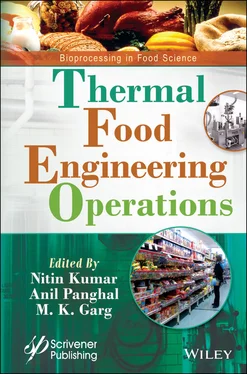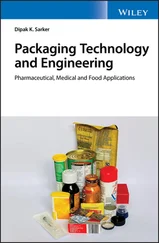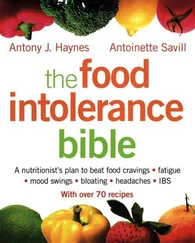NITIN KUMAR - Thermal Food Engineering Operations
Здесь есть возможность читать онлайн «NITIN KUMAR - Thermal Food Engineering Operations» — ознакомительный отрывок электронной книги совершенно бесплатно, а после прочтения отрывка купить полную версию. В некоторых случаях можно слушать аудио, скачать через торрент в формате fb2 и присутствует краткое содержание. Жанр: unrecognised, на английском языке. Описание произведения, (предисловие) а так же отзывы посетителей доступны на портале библиотеки ЛибКат.
- Название:Thermal Food Engineering Operations
- Автор:
- Жанр:
- Год:неизвестен
- ISBN:нет данных
- Рейтинг книги:5 / 5. Голосов: 1
-
Избранное:Добавить в избранное
- Отзывы:
-
Ваша оценка:
- 100
- 1
- 2
- 3
- 4
- 5
Thermal Food Engineering Operations: краткое содержание, описание и аннотация
Предлагаем к чтению аннотацию, описание, краткое содержание или предисловие (зависит от того, что написал сам автор книги «Thermal Food Engineering Operations»). Если вы не нашли необходимую информацию о книге — напишите в комментариях, мы постараемся отыскать её.
Presenting cutting-edge information on new and emerging food engineering processes,
, the first volume in the new series, “Bioprocessing in Food Science,” is an essential reference on the modeling, quality, safety, and technologies associated with food processing operations today.
This outstanding new volume:
Audience:
Thermal Food Engineering Operations — читать онлайн ознакомительный отрывок
Ниже представлен текст книги, разбитый по страницам. Система сохранения места последней прочитанной страницы, позволяет с удобством читать онлайн бесплатно книгу «Thermal Food Engineering Operations», без необходимости каждый раз заново искать на чём Вы остановились. Поставьте закладку, и сможете в любой момент перейти на страницу, на которой закончили чтение.
Интервал:
Закладка:
77. Vadivambal, R., & Jayas, D. S. (2010). Non-uniform temperature distribution during microwave heating of food materials-A review. Food and Bioprocess Technology , 3 (2), 161–171. https://doi.org/10.1007/s11947-008-0136-0
78. Valero, A., Cejudo, M., & García-Gimeno, R. M. (2014). Inactivation kinetics for Salmonella Enteritidis in potato omelet using microwave heating treatments. Food Control , 43 , 175-182.
79. Valerie Orsat & Vijaya G.S. Raghavan. (2005). Radio frequency processing. Emerging Technologies for Food Processing, 445-468. https://doi.org/10.1016/B978-012676757-5/50019-0
80. Vinatoru, M., Mason, T. J., & Calinescu, I. (2017). Ultrasonically assisted extraction (UAE) and microwave assisted extraction (MAE) of functional compounds from plant materials. TrAC Trends in Analytical Chemistry , 97 , 159-178.
81. Wang, S., Luechapattanaporn, K., & Tang, J. (2008). Experimental methods for evaluating heating uniformity in radio frequency systems. Biosystems Engineering , 100 (1), 58–65. https://doi.org/10.1016/j.biosystemseng.2008.01.011
82. Wongsa-Ngasri, P. (2004). Ohmic heating of biomaterials: Peeling and effects of rotating electric field. In ProQuest Dissertations and Theses . https://search.proquest.com/docview/305140014?accountid=27575
83. Won, M. Y., Lee, S. J., & Min, S. C. (2017). Mandarin preservation by microwave- powered cold plasma treatment. Innovative Food Science & Emerging Technologies , 39 , 25-32.
84. Zielinska, M., & Michalska, A. (2016). Microwave-assisted drying of blueberry (Vaccinium corymbosum L.) fruits: Drying kinetics, polyphenols, anthocyanins, antioxidant capacity, colour and texture. Food Chemistry , 212 , 671-680.
* Corresponding author : amritapreetam92@gmail.com
2
Microbial Inactivation with Heat Treatments
Sushree Titikshya*, Monalisa Sahoo, Vivek Kumar and S.N. Naik
Centre for Rural Development and Technology, IIT Delhi, Delhi, India
Abstract
Heat utilization in food processing is a century-old tradition utilized for the preservation, extraction, cleaning of different food products. Food quality and safety are the two major concerns in the industrial sector besides targeting different microorganisms found in the food. Techniques for food preservation are always improving at an increasing pace to avoid degradation of the food product, and novel methods to improvise microbial inactivation are also trending. With the rising customer demands for fresh products, industries are giving special attention to the heat resistance of spores from sensitive cold growing spores and finding ways for minimal processing with an amalgamation of facilities for cold storage and improved shelf life. Intensive studies were investigated for developing new alternative conventional techniques which look after better preservation of food, maintaining the color, texture, nutritional quality, and flavor of the food product. In the accumulation of environmental and food safety concerns, the techniques which have evolved as an innovative thermal preservative method in agricultural and food applications are ohmic heating, radiofrequency heating, microwave heating, infrared heating, and instant control pressure drop technology.
Keywords:Food quality, minimal processing, ohmic heating, food safety
2.1 Introduction
Food quality and safety have a long history and are continuing as the major concerns for preservation and targeting microorganisms. The chief cause for any type of deterioration of food products is microorganisms, and therefore inhibition of these are targeted using different methods by the food industries [1]. Varied techniques of food preservation have been utilized for centuries to avert poisoning and degradation of the food. With the passing phase, the new models and techniques are evolved promising to avert the degradation by inactivating microorganisms. But then again slowing down or terminating the growth of microorganisms will not ensure the proper safety of the food until and unless the environment is taken care of, like maintaining a cold chain throughout. Processing the food by application of heat has extended antiquity for the inactivation of microorganisms and is still considered as the utmost significant method of preservation [2]. Louis Pasteur introduced pasteurization in the late 19th century to eradicate spoilage-causing organisms and with the passing of time, new science-based heat processing emerged.
In the old heating process, the stability of the microbes was often quite high but the knowledge of the kinetics for different microbes was relevant. Traditional canning methods aim at the destruction of all spores (sterilization) or of all spores that can grow in the container below 40°C (commercial sterilization or appreciation) [3]. With the rising customer request for fresh products, industries are giving special attention to the heat resistance of spores from sensitive cold growing spores and finding ways for minimal processing with an amalgamation of facilities for cold storage and improved shelf life [4]. Quite a few sterilization methods have already been utilized by most of the food industry, the objective of which is to inactivate the microorganism from which the most common form of destruction is targeting the DNA of the microbial cell and destroying it in both liquid and solid food products through denaturation [5] did a study and concluded that the denaturation process requires high heat for 15 s at 71.06 °C accompanied by drying with air inlet temperature extending from 135 to 205 °C for 5–6 s.
Several works have been carried out during the past decades aiming to inhibit the growth of the foodborne pathogens in varied products. However, some of the traditional thermal treatments, al though they carefully inactivate all the microbes and extend the shelf life of the food, are still not favored as they cause degrading effects to the nutritional properties of the food product such as deterioration of the antioxidant compounds, flavor, proteins vitamins and volatile oils [6]. Therefore, intensive studies were investigated for developing new alternative conventional techniques which offer better preservation of food, maintaining the color, texture, nutritional quality, and flavor of the food product. In the accumulation of environmental and food safety concerns techniques which evolved as an innovative thermal preservative method in agricultural and food applications are ohmic heating, radiofrequency heating, microwave heating, infrared heating, and instant control pressure drop technology [7–9]. These physical factors can cause the inactivation of microorganisms at ambient or sublethal temperatures.
The major objective is to gather the knowledge of all the techniques, mechanisms of inactivation, and factors affecting the physical and orogenetic parameters of the particular food products. Furthermore, predicting kinetics and microbial nature during the application of varieties of different techniques through mathematical modeling is also considered the most vital tool in the food matrix. Therefore, the chief goal of this chapter is to provide a record that will provide data of the food degrading organisms, its quantitative behavior portrayal for different food matrix with varied environmental setup and besides with the pre-assumed mechanism of different alternative thermal techniques involved.
The final goal, however, is to answer the question of whether the microorganisms are inactivated after nonthermal processing. Although mathematical descriptions of heat inactivation date already from the early 20s, the development of new software during the last decades enables a better description of inactivation kinetics under different conditions. Combined with better control of temperature in each container a milder heat process can be designed without compromising microbial safety and stability [10]. The principles of modeling death kinetics will be addressed within the framework of quantitative microbiological risk assessment. The effect of environmental conditions and their extrapolation to real food situations will also be discussed.
Читать дальшеИнтервал:
Закладка:
Похожие книги на «Thermal Food Engineering Operations»
Представляем Вашему вниманию похожие книги на «Thermal Food Engineering Operations» списком для выбора. Мы отобрали схожую по названию и смыслу литературу в надежде предоставить читателям больше вариантов отыскать новые, интересные, ещё непрочитанные произведения.
Обсуждение, отзывы о книге «Thermal Food Engineering Operations» и просто собственные мнения читателей. Оставьте ваши комментарии, напишите, что Вы думаете о произведении, его смысле или главных героях. Укажите что конкретно понравилось, а что нет, и почему Вы так считаете.












